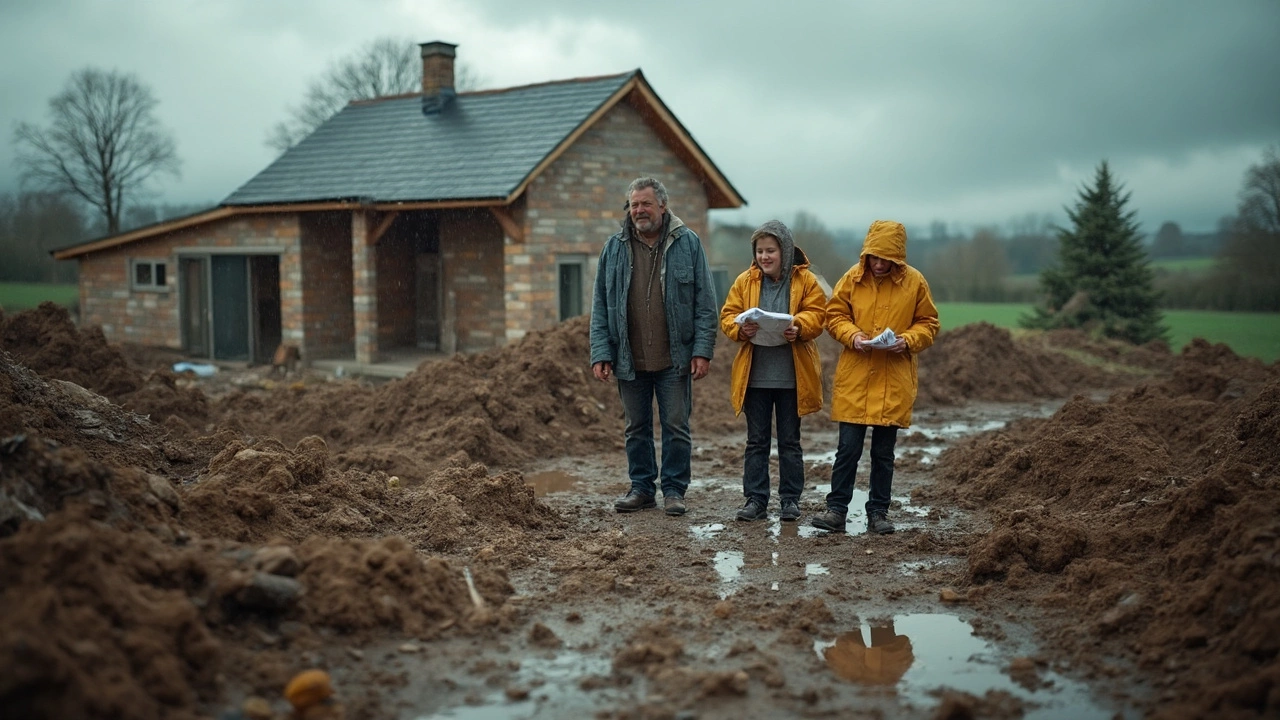Building a House: Essential Tips and Step‑by‑Step Guides
Thinking about building a house? It can feel like a mountain, but breaking it down into bite‑size pieces makes it doable. Below you’ll find the core steps most first‑time builders need, plus quick pointers on common hiccups like foundation cracks or cheap roofing options.
Planning and Budgeting
Start with a realistic budget. List every major item – land, permits, foundation, walls, roof, windows, interior finishes, and a little extra for surprises. A good rule is to set aside 10‑15% of the total as a contingency fund. If you’re not sure how much a roof will cost, compare cheap roofing materials (metal, asphalt) against long‑term durability; you’ll often save more in the long run by choosing a slightly pricier option that lasts.
Next, check local building codes. Knowing the required fire safety measures for Type 5 (wood‑frame) construction, for example, can save you time and re‑work later. Grab a simple checklist: planning permission, structural engineer sign‑off, and any special rules for your area.
Construction Phases You’ll Face
1. Foundation – This is where most problems start. Horizontal cracks can signal movement; a repair may cost a few hundred pounds, but untreated cracks can lead to much bigger expenses. If you spot a crack, get a professional to assess whether a simple epoxy fill will do or if the foundation needs underpinning.
2. Framing – In a typical wood‑frame house, walls go up quickly. Keep an eye on stud spacing and make sure you follow the fire safety guidelines for Type 5 buildings. A solid frame saves you from future squeaks and helps with insulation later.
3. Roofing – Choose a material that suits your climate and budget. Metal roofs are affordable, lightweight, and last decades. If you’re looking for the cheapest route, asphalt shingles are common, but ask a roofer how they price per square to avoid hidden mark‑ups.
4. Windows and Doors – Good windows improve energy bills and curb appeal. Look for double‑glazed units and proper flashing to stop leaks. If you plan a garage, consider a reliable garage door service – a well‑fitted door adds security and prevents drafts.
5. Interior Work – This includes plumbing, electrical, insulation, and drywall. When doing a loft conversion, decide which type (dormer, hip‑to‑gable, roof‑light) fits your space and budget. Each style has its own cost profile, so compare a few options before committing.
6. Finishing Touches – Flooring, kitchen cabinets, bathroom tiles, and paint bring the house to life. A common debate in bathroom remodels is whether to tile walls or floor first; most pros suggest tiling the floor first to avoid cutting wall tiles later.
Throughout the build, keep a simple spreadsheet of expenses and timelines. Regularly check progress against your plan – if a task drags, address it early before it pushes the whole schedule back.
Building a house isn’t a sprint; it’s a series of small wins. By staying organized, budgeting wisely, and tackling each construction phase with clear goals, you’ll finish with a home that feels right and stays solid for years to come.

Cons of Building a House: What to Expect Before You Start
May 23, 2025, Posted by Damon Blackwood
Thinking about building your own house? It's not all shiny new floors and open layouts. This article breaks down the biggest drawbacks to building a home from scratch. You'll get real talk about delays, budgets going haywire, and the stress that comes with every little decision. Discover how unexpected issues can hit your wallet and what surprises could pop up along the way. If you want to dodge rookie mistakes, you’ll want to know what might trip you up.
MORESEARCH HERE
Categories
TAGS
- foundation repair
- commercial construction
- construction
- new builds
- home improvement
- home renovation
- bathroom renovation
- residential construction
- construction materials
- home foundation
- renovation tips
- building types
- contractor
- foundation cracks
- home construction
- architectural services
- building codes
- construction differences
- home inspection
- kitchen installation